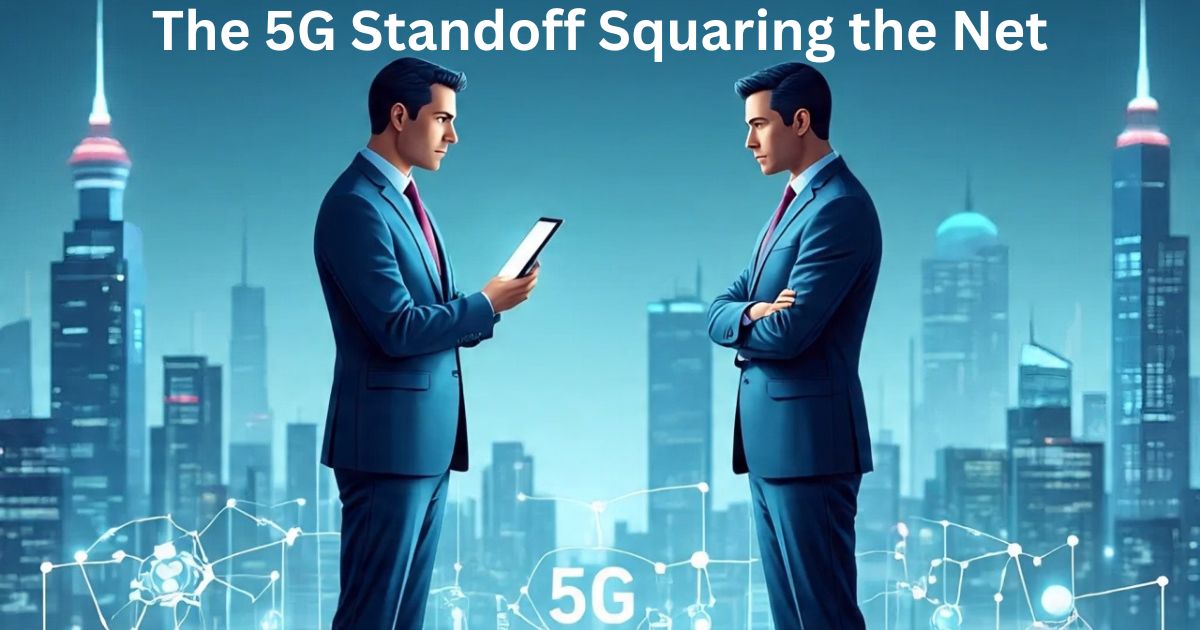The term “The 5G Standoff Squaring the Net” has emerged as a metaphor for the growing global tension surrounding the deployment, control, and impact of 5G technology. This standoff is not simply about faster internet speeds—it represents a critical intersection of geopolitics, national security, corporate rivalry, digital sovereignty, and civil liberty. The phrase “squaring the net” suggests an effort to align or reconcile multiple conflicting interests and values in the digital realm.
In this article, we explore the layers of this complex standoff, including its technical basis, global political landscape, key players, risks, and future outlook.
What is 5G and Why is It Revolutionary?
5G, or fifth-generation mobile network technology, is designed to significantly enhance mobile internet speed, responsiveness, and capacity. Compared to its predecessor (4G LTE), 5G offers:
- Up to 100x faster speeds
- Ultra-low latency (<1 ms)
- Massive device connectivity (IoT at scale)
- Support for autonomous systems, smart cities, and advanced robotics
This technological leap is expected to be a critical infrastructure for future economies, powering everything from self-driving cars to remote surgeries. Because of its central role, whoever controls 5G networks essentially gains leverage in the global digital economy.
The 5G Standoff: Key Players in Conflict
At the heart of The 5G Standoff Squaring the Net are a few dominant actors, each pursuing divergent goals:
1. The United States
The U.S. has pushed for a “clean network” initiative, banning Huawei and ZTE equipment from its domestic 5G infrastructure due to espionage concerns. American officials have also pressured allies to reject Chinese tech in their national rollouts.
2. China
China, through Huawei, has rapidly become the largest global provider of 5G equipment. It argues that the backlash is politically motivated and part of a larger technology containment strategy by the West.
3. European Union
The EU is caught in the middle, balancing security concerns and economic interests. Countries like Germany, the UK, and France have each taken different approaches—some restricting Huawei’s role, others allowing limited participation.
4. India, Russia, and Emerging Economies
Countries like India have excluded Chinese vendors while building indigenous alternatives, and Russia is pursuing 5G development through partnerships, often in alignment with China.
Technology Meets Politics: Surveillance, Sovereignty, and Security

5G’s potential has sparked national security fears, primarily around the idea that state-backed companies could install backdoors in network equipment to enable cyber espionage. In this context, the “standoff” represents:
- U.S. claims of Chinese interference through Huawei
- Chinese accusations of unfair trade practices and tech bullying
- European anxiety over losing technological autonomy
- User fears over privacy and surveillance
This is where “squaring the net” becomes crucial—how do we secure global internet infrastructure without fragmenting it or ceding it to authoritarian control?
The Role of Huawei and the Clean Network Initiative
Huawei’s Position
Huawei leads in terms of 5G patents, base stations, and pricing competitiveness. The Chinese government heavily supports Huawei, seeing it as a national champion in the race for technological supremacy.
U.S. Response: Clean Network
The Clean Network initiative, launched under the Trump administration and expanded by the Biden administration, aims to:
- Exclude Chinese equipment from 5G infrastructure
- Promote trusted vendors from allied countries (like Ericsson, Nokia, and Samsung)
- Support democratic values in cyberspace
This campaign has led to decoupling, with the digital world splitting into two spheres of influence: U.S.-led and China-led networks.
Economic Stakes: The Digital Cold War
The 5G standoff is often likened to a digital Cold War, where data flows, hardware control, and software ecosystems are all strategic assets.
Financial Impact:
- The global 5G market is projected to surpass $1 trillion by 2030.
- Countries that lead in 5G are expected to gain a major GDP advantage.
- Equipment contracts, service revenues, and intellectual property rights are at stake.
Tech giants like Qualcomm, Intel, and Cisco on one side, and Huawei, ZTE, and Xiaomi on the other, form competing ecosystems of devices and standards.
“Squaring the Net”: Reimagining the Internet’s Foundations
The phrase “squaring the net” implies an attempt to harmonize multiple goals within the internet’s infrastructure. These include:
- Openness vs. control
- Speed and innovation vs. security
- Global connectivity vs. national sovereignty
- Corporate profit vs. public good
As countries roll out 5G, they are also debating internet governance models—from open-source decentralized architectures to sovereign digital frameworks (like Russia’s “Runet” or China’s “Great Firewall”).
Possible Paths Forward:
- Global cooperation on 5G standards via the ITU and 3GPP
- Regional alliances for secure tech development
- Public-private partnerships to balance innovation and ethics
The Civil Liberties Question
One underexplored angle in the 5G standoff is its impact on civil liberties. The same ultra-fast networks that enable autonomous vehicles and telemedicine also enable:
- Real-time facial recognition
- Predictive policing
- Surveillance drones
Authoritarian regimes can leverage 5G to build panoptic surveillance states, while democracies must ensure transparency, oversight, and user rights.
The standoff is not just between countries—it’s a battle over the future of digital freedoms vs. digital authoritarianism.
Cybersecurity and Infrastructure Resilience

With great speed comes great vulnerability. 5G introduces new attack surfaces that could be exploited by:
- Nation-state actors
- Organized cybercrime
- Hacktivists
To square the net, governments must invest in:
- Zero-trust architectures
- Network slicing security
- Encrypted data pipelines
- Regular audit protocols
Building resilient 5G infrastructure means preparing for cyber warfare, data breaches, and insider threats on an unprecedented scale.
Global Public Sentiment and Misinformation

Public understanding of 5G has been clouded by misinformation, including debunked theories linking it to COVID-19. Anti-5G protests, vandalism of cell towers, and conspiracy videos have complicated rollout efforts.
This highlights the need for:
- Public education campaigns
- Transparent deployment strategies
- Ethical oversight on data use and health research
To “square the net,” stakeholders must rebuild public trust in 5G technology.
The Road Ahead: Is Digital Harmony Possible?
Despite current tensions, there are signs that coexistence is possible. Multilateral forums like the G20, ITU, and GSMA continue to work on unified standards. The race to 6G is also pushing nations to rethink their approach to cooperation and competition.
Future trends to watch:
- Open RAN technology allowing modular 5G networks
- Decentralized cloud systems reducing single-point vulnerabilities
- Quantum encryption for secure communication
- Cross-border cyber norms for peaceful internet use
Squaring the net means aligning these innovations with a shared vision for freedom, fairness, and safety in the digital age.
Conclusion
The 5G Standoff Squaring the Net is more than a technology rivalry—it is a defining challenge of our era. It demands a balance between geopolitical strategy and global cooperation, between private innovation and public interest, between speed and safety.
The decisions made in this standoff will shape not just the internet of the future, but the very nature of society, governance, and liberty in the 21st century. Whether the world chooses confrontation or consensus, one thing is clear: 5G is not just about connectivity—it’s about control.










